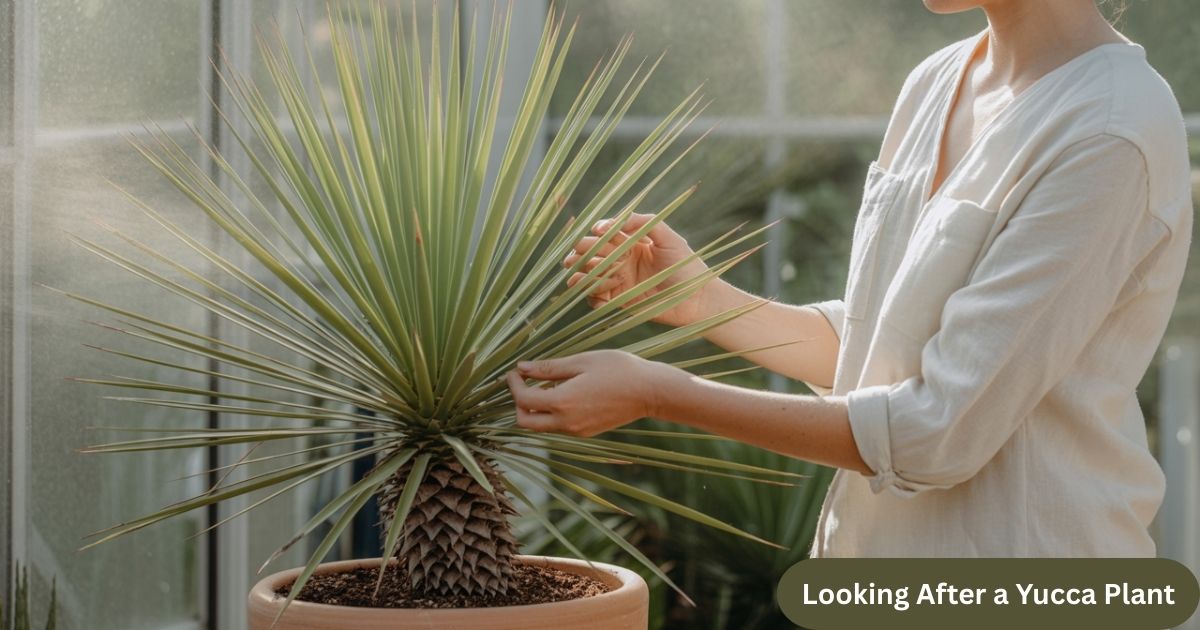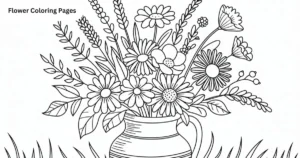Yucca plants are popular ornamental plants known for their striking, sword-like leaves and towering flower spikes. Native to arid regions, they have adapted well to both indoor and outdoor settings, making them a favorite for many gardeners. Whether placed in a sunny corner of your home or in a dry garden bed, yuccas are low-maintenance yet dramatic plants that add a touch of desert beauty to any space.
Yuccas are hardy plants that thrive in a variety of conditions, making them easy to grow for both beginners and experienced gardeners. Their resilience to drought and poor soil quality is impressive, and their minimal care requirements make them ideal for those with busy schedules.
Choosing the Right Location for Your Yucca Plant
The location of your yucca plant plays a significant role in its overall health. These plants prefer bright, direct sunlight and will flourish when placed in a sunny spot. In outdoor environments, yuccas are best suited for areas with plenty of exposure to the sun, such as near a south-facing wall or in a dry, well-drained garden bed. Indoor yuccas should be placed near a window where they can soak up the sunlight for at least six hours a day.
When selecting a location, it is also important to consider temperature and humidity. Yuccas are sensitive to cold, and temperatures below 50°F (10°C) can damage the plant. If growing indoors, avoid placing your yucca near drafty windows or air conditioning units. Outdoor yuccas should be protected from harsh winter winds, especially in colder climates, to ensure they stay healthy year-round.
Watering Your Yucca Plant
Watering is a critical aspect of yucca plant care. These plants are drought-tolerant and require minimal watering compared to other houseplants. Overwatering is a common mistake, as yuccas are susceptible to root rot if left in soggy soil. To prevent this, ensure the soil is completely dry before watering again. During the growing season (spring and summer), water your yucca every two weeks, and reduce the frequency in winter when the plant is dormant.
To properly water your yucca, make sure the pot or ground has good drainage to allow excess water to escape. Yuccas are sensitive to standing water, so ensure the bottom of the pot has drainage holes. When watering, thoroughly soak the soil but avoid letting water accumulate in the saucer or base of the pot.
Understanding the Soil Requirements
Yuccas thrive in well-draining soil that mimics their native dry environments. The best soil for yucca plants is a mixture of sandy and loamy soil, which ensures water drains effectively while retaining enough moisture to support healthy growth. If planting your yucca in a pot, choose a cactus or succulent potting mix, which is designed to provide the right balance of drainage and moisture retention for these drought-tolerant plants.
If you’re planting yuccas outdoors, amend the soil with sand or perlite to improve drainage. Clay-heavy soil tends to hold too much moisture, which can lead to root rot, so it’s important to mix in materials that enhance aeration and drainage. Good soil conditions allow the roots to breathe and help prevent fungal infections, ensuring your yucca plant remains healthy and vibrant for years to come.
Fertilizing and Feeding Yucca Plants
Yuccas do not require frequent fertilization, but periodic feeding can encourage strong growth and vibrant leaves. During the active growing season, which typically lasts from spring to early fall, fertilize your yucca once a month with a balanced liquid fertilizer. It is important to dilute the fertilizer to half strength to avoid overfeeding, which can lead to nutrient imbalances or damage the plant.
In the winter months, yuccas enter a period of dormancy and do not require fertilization. Over-fertilizing during this time can cause stress to the plant, so it’s best to cut back on feeding. If your yucca is in a nutrient-rich garden bed, it may not require fertilization at all. Regularly check the plant for signs of nutrient deficiencies, such as yellowing leaves, to determine when feeding may be necessary.
Pruning and Trimming Yucca Plants
Pruning is an important part of yucca care, as it helps maintain the plant’s shape and overall health. Dead or damaged leaves should be trimmed away regularly to prevent any disease or pest issues. Use a clean, sharp pair of scissors or pruning shears to remove any brown or yellowing leaves. When cutting, be sure to trim close to the base of the leaf to encourage new growth.
In addition to removing dead foliage, yuccas can be pruned to control their size and shape. If your yucca has become too tall or leggy, cutting back the top of the plant can help encourage bushier growth. However, be cautious not to remove too much of the plant at once, as this could stunt its growth.
Dealing with Common Pests and Diseases
While yuccas are generally pest-resistant, they can still fall prey to certain insects, such as mealybugs, scale insects, or spider mites. These pests tend to infest the plant’s leaves or stems, sucking out the sap and causing damage. If you notice small, white, cotton-like clumps or a sticky residue on the leaves, it may indicate a pest infestation. Regularly inspect your yucca and treat any infestations promptly with insecticidal soap or by wiping the leaves with a damp cloth.
Diseases such as root rot or leaf spots can also affect yucca plants, particularly if they are overwatered or have poor drainage. Root rot often results from waterlogged soil, leading to brown, mushy roots. To prevent disease, ensure your yucca is in well-drained soil and avoid overwatering. If you notice any signs of infection, such as wilting or discolored leaves, remove the affected areas and adjust your care routine to prevent further issues.
Repotting and Propagating Yucca Plants
Yucca plants do not need frequent repotting, but they should be repotted when their roots outgrow their container or when they become root-bound. This typically happens every two to three years, depending on the size of the plant and pot. When repotting, choose a slightly larger container with good drainage. Carefully remove the plant from its current pot and trim any overly long or tangled roots before placing it in the new container.
Yuccas can also be propagated through offshoots or stem cuttings. If your yucca produces small offshoots at the base of the plant, you can separate them from the main plant and repot them to grow new plants. To propagate using stem cuttings, cut a healthy section of the stem and allow it to dry for a few days before planting it in well-draining soil. Both methods are simple ways to create new yucca plants from your existing ones, allowing you to expand your collection or share with others.
Read More: Spineless Yucca Elephantipes
Conclusion
In conclusion, looking after a yucca plant is simple and rewarding, as long as you follow a few basic care guidelines. By ensuring the right location, providing minimal but proper watering, and using well-draining soil, your yucca will thrive for years.
Regular pruning, occasional fertilizing, and pest management will also keep it healthy and beautiful. With the right attention, yuccas can be low-maintenance yet striking additions to any indoor or outdoor space. By understanding these key aspects, you can enjoy the beauty of yucca plants while keeping them vibrant and flourishing throughout the seasons.
FAQ’s
How often should I water my yucca plant?
Water your yucca every two weeks, allowing the soil to dry out completely between waterings.
Can yuccas grow indoors?
Yes, yuccas thrive indoors with plenty of direct sunlight and well-draining soil.
What type of soil is best for yucca plants?
Yuccas prefer sandy, well-draining soil or cactus/succulent potting mix.
Do yuccas need a lot of fertilizer?
No, yuccas need minimal fertilization, typically once a month during the growing season.
How can I propagate a yucca plant?
Yuccas can be propagated by offshoots or stem cuttings, both of which can be replanted in well-draining soil.









